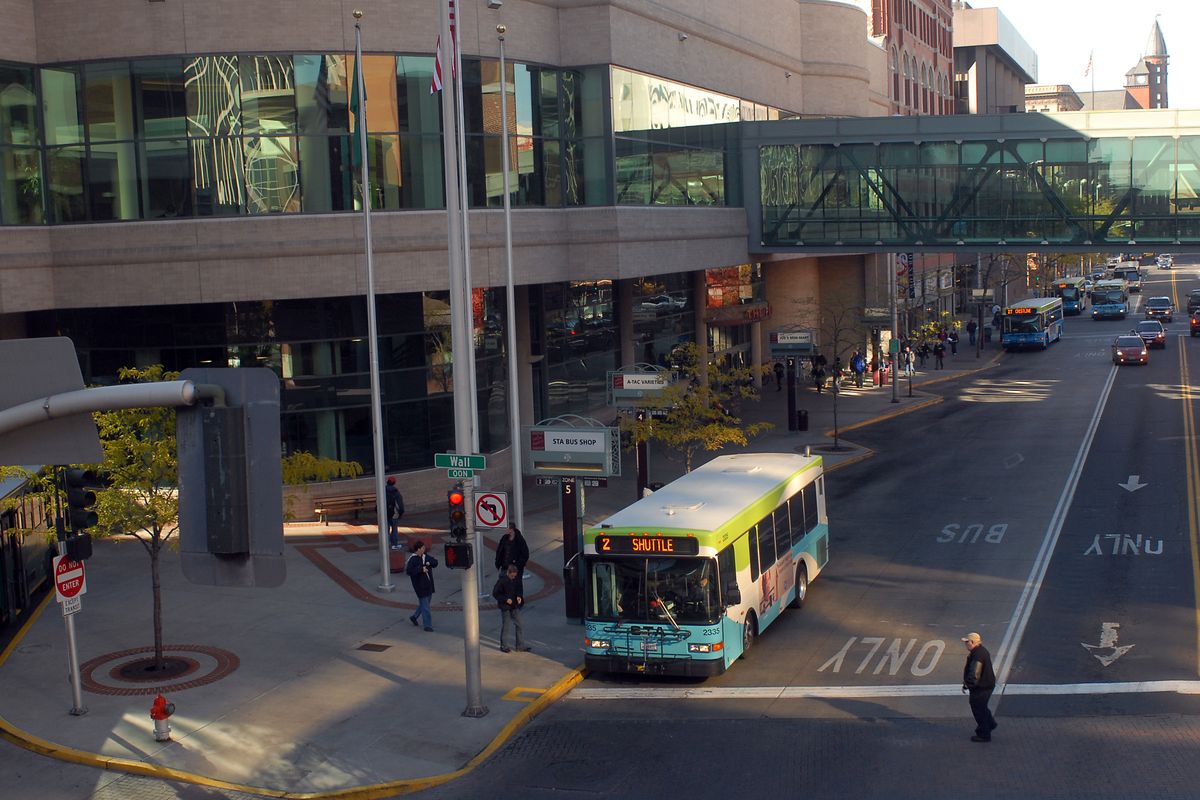STA reports record ridership in 2014

Five years after a recession-caused slump in Spokane Transit Authority bus ridership, the agency this week reported that 2014 brought a record number of 11.3 million passenger trips.
That number exceeds the previous high of 11.2 million in 2009 at the start of the economic slowdown triggered by the Great Recession that year.
It occurred even as the cost of gasoline has been dropping.
Prior to the recession, the agency had seen a big increase in ridership from 7.7 million in 2005 to the 11.2 million in 2009.
STA estimates that the agency hauled bus passengers a combined 48 million miles last year, the highest in agency history.
“It’s all positive news we are doing the right thing,” said Spokane County Commissioner Al French, a member of the STA board.
He said more riders means that STA is gathering more fare revenue yet traveling the same number of miles.
The fact that the increase in riders comes as gas prices fall shows that the overall trend for ridership is solidly upward, he said.
The new ridership numbers come at a time when the agency is seeking voter approval of a sales tax increase to expand transit service and to preserve existing service.
The STA board last month decided to ask voters for a 0.3 percent increase in the sales tax to pay for system improvements, including a Central City Line from Browne’s Addition to Spokane Community College by way of downtown. Other improvements involve new transit centers, new park and ride lots and high-performance routes as well as shoring up existing service. High-performance routes speed travel times and run frequently.
The tax measure goes on the April 28 ballot. If approved, the collection would run for 10 years. Another vote would be required to continue the tax after that.
STA Chief Executive Officer Susan Meyer said she expects incremental increases in ridership under the current level of service, but if voters approve the expansion of the system, ridership will grow much more quickly because improvements will bring greater convenience and more options.
Population growth and economic development over the next 25 years will combine with a trend among younger people to choose public transit over private vehicles to increase demand for buses, STA officials said.
“We know people want to use the system if the system can expand service,” French said.
STA’s Moving Forward proposal, developed through community outreach, outlines 10 years of work to achieve the expansion under a pay-as-you-go model.
Meyer said the tax proposal contains 28 specific projects to address current and future needs to meet an expected 30 percent increase in ridership in coming years.
If approved, riders will see greater Saturday service, increased bus frequency, expanded transit routes, more transfer options and reduced travel times.
Improvements made to the system a decade ago were credited with a large increase in ridership from 2004 through 2009.
Bus use fell starting in 2010, but has slowly recovered.
Currently, some of STA’s busiest routes are frequently filled.
“During peak hours, it’s hard sometimes to get a seat on some buses or to even stand,” Meyer said.